Egypt Old and Middle Kingdoms
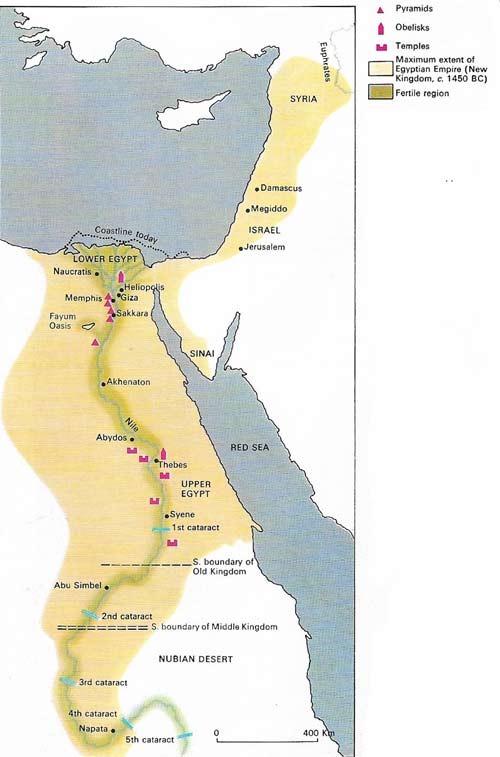
Figure 1. Egypt divides naturally into two areas – Lower Egypt, which consists of the Nile Delta region, and the long, narrow strip of Upper Egypt, which is confined on both sides by desert. The annual flooding of the Nile brought water for land irrigation and also deposited a rich topsoil. Egypt's agricultural prosperity was based on the river's unfailing predictability.
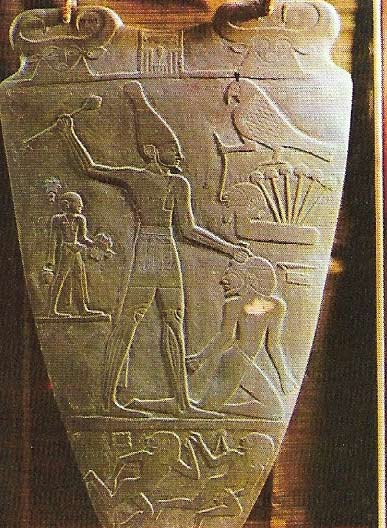
Figure 2. Egypt's unification was brought about by war. Victories of the early rulers are commemorated on ceremonial palettes such as this one depicting Menes, the first ruler of all Egypt.
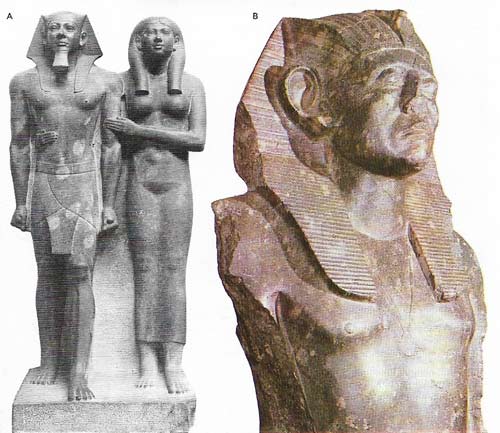
Figure 3. The monarch's public image in the Old and Middle Kingdoms was widely different, a change reflected in the royal statuary. The figure of King Menkaure of Dynasty IV (A) with his queen is an idealized portrait of the god-king. The aftermath of the First Intermediate Period saw the development of a more realistic and intense style, as in the statue of Senusret III (B).
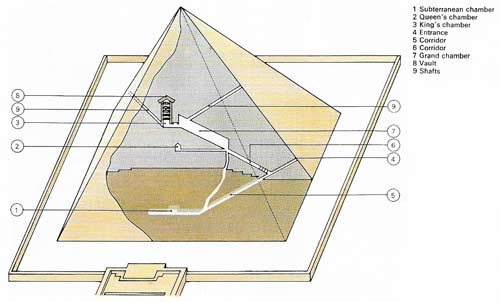
Figure 4. The Great Pyramid erected at Giza by Khufu, second ruler of Dynasty IV, provides a typical example of the art of the pyramid builder. It is built of limestone blocks and was originally faced with fine white limestone. It was approximately 146 meters (480 feet) height. After two changes in plan the final resting place of the body, called the King's Chamber, was constructed of granite and approached via the Grand Chamber. The sarcophagus is still in place.

Figure 5. Scribes, such as this one depicted in an Old Kingdom statue, were the key to the smooth functioning of the Egyptian administration. Papyrus was used for the recording of daily accounts and business, but very few pieces have survived from this period.
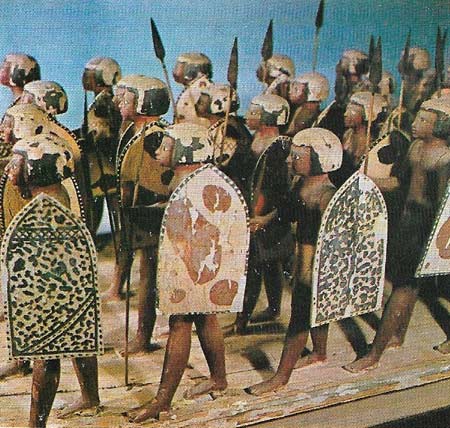
Figure 6. In the afterlife the same things were felt to be required as in this life. Everyday items, even down to models of retainers like these soldiers, were therefore placed in tombs.
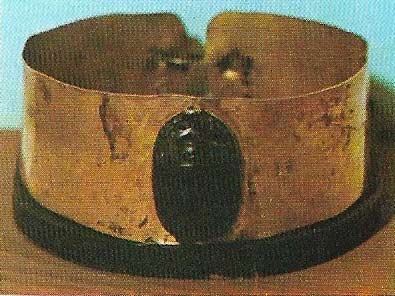
Figure 7. Egypt's lack of certain raw materials, notably timber, resulted in the growth from early dynastic times of a flourishing trade between Egyptian and Syrian ports. Egypt's influence in Syria and Palestine during the rich period of the Middle Kingdom is reflected in the Egyptian statuary and jewelry found in those regions.
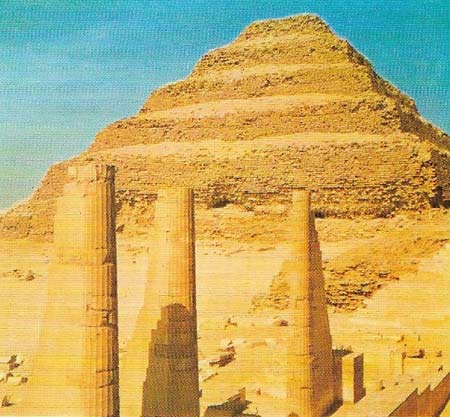
Figure 8. King Zoser's step-pyramid at Sakkara, Memphis, was the first major Egyptian building in stone. It was supposedly designed by his vizier Imhotep, who was later deified.
Successive prehistoric cultures designated by the names of Badarian, Naqada I, and Naqada II have been identified from archeological remains in Upper Egypt but remains from Lower Egypt are scanty and make any sound historical judgment rather difficult. It would appear that two distinct kingdoms evolved in Lower and Upper Egypt (Figure 1) and that the unification of the country was brought about by the victory of Upper Egypt over Lower Egypt c. 3100 BC. Even after this unification, however, the peoples of ancient Egypt continued to call their country the Two Lands.
The divine kings of Dynasty I
Traditionally the first ruler of Dynasty I and conqueror of Lower Egypt is known as Menes (Figure 2) and he is credited with the foundation of the national capital of Memphis, just south of the Nile Delta. The reigning king was regarded as the living embodiment of the falcon-god Horus and hence divine. During the first dynasty and the next farmers began to use the plough extensively, and irrigation was probably introduced. A national government evolved and writing was developed.
With Dynasty III began the period known as the Old Kingdom (c. 2686–2181 BC). The most prominent ruler of Dynasty III was Zoser, for whom the Step-Pyramid complex was built (Figure 8). Under Snofru, the founder of Dynasty IV, the first true pyramid was constructed and the technique of building pyramids was perfected under his successors Khufu, Khephren, and Menkaure. The construction of the pyramids (4) entailed enormous expenditure and organization, and the weakening of the power of the crown at the end of Dynasty IV led to the abandonment of the more expensive techniques.
During Dynasty V the cult of the sun-god Re regained national pre-eminence and the rulers undertook the construction of solar temples for his worship. At the end of Dynasty V magical texts were inscribed on the walls of the burial chamber of the royal pyramids to ensure the safe passage of the ruler's spirit to the afterworld. During Dynasties IV to VI periodic campaigns were undertaken against tribesmen in the Sinai peninsula and large-scale expeditions were dispatched to Nubia to extort or trade for ivory, gold and other precious materials.
At the end of Dynasty VI the growth in power of the provincial governors, the nomarchs, led to the steady weakening of the control of the Memphis hierarchy. Rival dynasties appeared in Heracleopolis and Thebes and the country was plunged into civil war. The confusion was compounded by the infiltration of Asiatic tribesmen from Sinai into the fertile regions of the Delta.
A period of confusion ends
This chaotic and ill-documented era is known as the First Intermediate Period (c. 2181–c. 2050 BC). Montuhotep II of Dynasty XI, Prince of Thebes, overcame his rivals and reunited Egypt under his rule, although the many nomarchs retained considerable power. He expelled the Libyan and Bedouin raiders, inaugurating the Middle Kingdom in Egypt (c. 2050–1786 BC). Montuhotep II had a mortuary temple and tomb built for himself at Deir el-Bahari on the west bank of the Nile opposite Thebes. Montuhotep II's descendant Montuhotep IV was succeeded in unknown circumstances by his vizier Amenemhat I, who founded Dynasty XII in about 1991 BC.
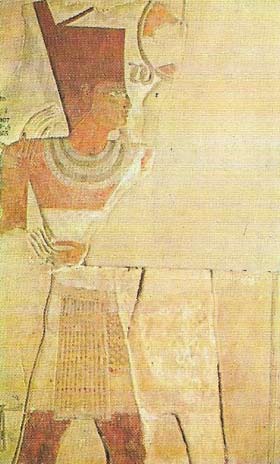 |
| King Montuhotep II is shown being embraced by Re, the sun-god, in a painted relief from the king's mortuary temple at Deir el-Bahari. The king also prepared tombs for Nefru, his sister and queen, and for several of his concubines. Later rulers of Dynasty XI built similar temples opposite Thebes on the Nile's west bank. |
Amenemhat I founded a new capital at Lisht south of Memphis because Thebes was too far south to serve as an efficient capital. To strengthen his hold on the throne he circulated a spurious prophecy concerning his rise to power and appointed his son Senusret I as co-ruler. Despite these precautions Amenemhat I was assassinated after 30 years of rule but his son managed to secure the throne. The powers of the provincial nobility that might rival the throne were suppressed under Senusret ill. Amenemhat I had begun the conquest of Nubia and this expansion was completed under Senusret III, who fixed the southern border at Semna. Apart from one attested incursion into southern Palestine no steps appear to have been taken to exercise direct control in Palestine or Syria, but trade links were strongly maintained. A line of fortifications was built by Amenemhat I in Sinai to deter possible invasions. The rulers of Dynasty XII sponsored a vast land reclamation project in the Fayum area.
The Second Intermediate Period (c. 1786–1570 BC) was marked by a decline in the power of the central government. During Dynasty XIII Asiatic invaders broke through the Egyptian defenses and infiltrated the country. These foreigners are commonly known as the Hyksos, although the term should properly be applied to the chiefs only. The Hyksos eventually secured control of most of the country, with the aid of new military weapons such as chariots, and were the founders of Dynasty XV (c. 1674–1570 BC), although it is most unlikely that they ever exercised direct control over Thebes and the south. More probably Thebes was forced to acknowledge the supremacy of the Hyksos ruler in his new capital of Avaris in the Delta.
The invaders are expelled
The Hyksos did not rule as foreigners but adopted Egyptian titles and Egyptian culture. As their power weakened, the princes of Thebes of Dynasty XVII were emboldened openly to reject Hyksos rule and, after several campaigns, Kamose and his successor, his brother Ahmose, succeeded in taking Avaris and expelling the invaders.
